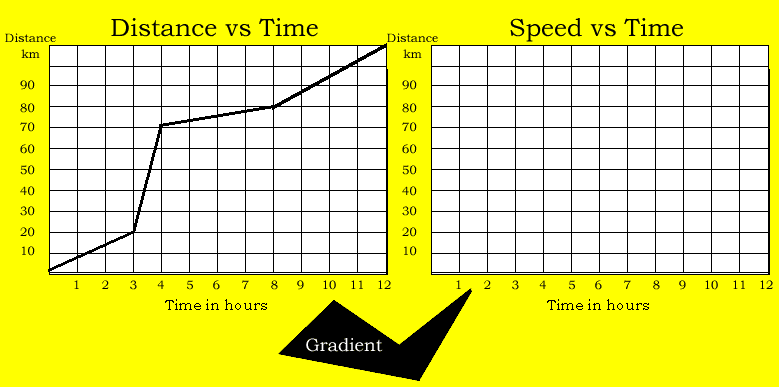

You, and other students, all independently time the run. One student runs a distance of 100 metres.The distribution of results grows as results are added. Students drop in a disc for the value they achieve. This experiment was safety-checked in January 2007Īssign values to each channel. If you plan to use ticker-timers regularly in motion experiments, give students extra time with early investigations so they become familiar and confident with the equipment. Some struggle to get a time reading from the paper tape and get confused about what the dot spacings represent. Many students find the ticker-timer an awkward piece of equipment.
Distance vs time graph physics lab how to#
The key teaching point is how to select appropriate equipment, by using the concepts of accuracy and uncertainty in measurements. Encourage students to discuss or write about the strengths and weaknesses of each method. Make a simple speed measurement for a moving object such as a mechanics trolley or a pull-back car using the ticker-timer and conventional stopwatch. How Science Works extension: This activity can be used as a prompt to discuss the relative merits of the ticker-timer as a timing device compared to a stopwatch.Each blob-to-blob space represents a tick of time. Fast and slow motion by the wallpaper puller will produce blobs at different separations for equal time intervals. These could be indicated by a steady handclap or a metronome. Move a roll of wallpaper along the bench or floor and ask a student to put blobs of paint or ink onto the wallpaper at regular times. You can make a model of the action of the ticker-timer and the ticker-tape.(Some ticker-timers will give dot-making frequency of 100 Hz, and for these the value of one tick is equivalent to 1/100 seconds or 0.01 s. For these, the expected mean value of one tick is 1/50 second, or 0.02 s. Most ticker-timers vibrate at 50 Hz, and thus make 50 dots per second. You could make a bar chart of students' answers for the time, in seconds, that is equivalent to one tick.Times can be tabulated, and used for discussion of range, mean and estimated error. This provides the opportunity for comparison of the times obtained by different students. All students could use the same start and stop signals, such as two handclaps by the teacher.Work out the time in seconds that is the same as 1 tick. Find out how many ticks there are in 3 seconds. Pull the tape through the ticker-timer for 3 seconds. Use a fresh piece of tape, and a stopwatch or stopclock.That is the time between the signals, measured in ticks. Count the number of dot-to-dot spaces between the start and the stop.Pull the tape slowly and switch the ticker-timer on at the start signal. These could be handclaps by one of your group or by your teacher. You need a start signal and a stop signal.Thread another 1 metre piece of tape through the ticker-timer.We can say that each dot-to-dot space stands for a tick of time. Check the tape to see if you can see each individual dot, with a space between.Pull the tape slowly through the ticker-timer. Thread a longer piece of ticker-tape, about 1 metre long, through the ticker-timer.If the tape didn't move when the ticker-timer was switched on, then all the dots will be in the same place. Remove the tape from the ticker-timer.It makes a lot of dots on the tape, at regular intervals. It vibrates rapidly and hits the top of the carbon paper.


If there is a carbon paper disc, make sure the tape goes underneath the disc.

After the tape has been struck with the vibrating arm, it takes a few minutes for the dots to become visible. Some ticker-timers use light-developed tape rather than carbon discs. The ticker-timer should come with a recommended power supply unit (low voltage AC as specified, with on/off switch). Read our standard health & safety guidance In crowded laboratories, estimate the space needed by the tape puller and arrange the groups to avoid collisions.


 0 kommentar(er)
0 kommentar(er)
